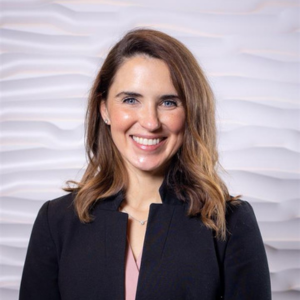By the time ophthalmology residents at the University of Colorado School of Medicine graduate from the program, they’ll have done more than three or four times the number of required cataract surgeries to become practicing physicians.
That’s in part due to a new virtual reality surgical simulator purchased by the Department of Ophthalmology this year that allows residents to fine-tune their surgical techniques and conveniently practice cataract surgeries in a lifelike environment whenever it fits into their schedules.
“One of our biggest roles as educators is teaching residents how to teach themselves and how to become constant learners. The way we do cataract surgery now is vastly different than it was a few decades ago, so giving the residents tools that allow them to take ownership of their own surgical skill acquisition is such an important priority,” says Residency Program Director Monica Ertel, MD, PhD, who credits her own success in the operating room to a simulator she used throughout her residency program.
“I would spend hours in our resident room working on the simulator just to refine my skills,” she says. “I’m glad that our residents can have that same experience.”
Prioritizing practice
The simulator — which features a screen, surgery instruments, microscope, and artificial eyeball — starts with basic tasks then gradually gets more difficult, working trainees up to the point of a mock cataract surgery. In the first modules, users are directed to touch small dots with an electronic scalpel – a task that helps with hand movement and familiarity moving around the eye.
“When you’re operating under a microscope, there are a lot of movements with your hands that don’t feel natural at the beginning,” says Ian McClain, MD, a PGY-3 ophthalmology resident. “But you can really become comfortable with moving your hands and getting that piece down with this simulator.”
 The cataract surgery simulator is available to residents to use whenever is convenient for their schedules. The modules help build necessary skills to ensure a safe procedure.
The cataract surgery simulator is available to residents to use whenever is convenient for their schedules. The modules help build necessary skills to ensure a safe procedure.
Residents have other options for learning the surgery, too. In a wet lab, they can practice on an animal model eye.
“It’s a great way to learn, but it comes with barriers that the simulator does not,” Ertel, who is an assistant professor of ophthalmology, explains. “You must set everything up, the phaco machine, the tools, the bags of fluid, and piping and tubing. The simulator is easy access. If a resident is on a lunch break or in between clinic calls, they can come and spend time working on skills.”
An added bonus is that the simulator offers training that can reduce hand tremors and expand bimanual dexterity, which is crucial when working in such a small area. For PGY-3 resident Ari Stoner, MD, having feedback with simulator training is especially helpful.
“It can be hard for us to really judge how well we did individually, but here you get error messages,” he says. “Knowing where you can improve is important because even if you touch something with your instrument that’s a couple of millimeters away, it can have profound consequences.”
An investment with high returns
When residents eventually reach the operating room with patients, they’ve already completed several cataract surgeries through the wet lab and simulator, and they feel more comfortable with the tools they need to successfully complete the procedure – which is great news for patient care, Ertel says.
Several studies have shown that there are higher rates of complications in an ophthalmologist’s first 50 to 100 cataract surgeries, “so having the residents spend that time on our simulator before the operating room really does result in better, safer outcomes for our patients,” she adds.

Ophthalmology resident Ari Stoner, MD, using the simulator.
An estimated 3.5 million cataract surgeries are performed in the U.S. each year, making it one of the most common out-patient procedures. Residents say rigorous education and support from the department means they can better serve those patients.
“Our faculty members are dedicated to our learning,” McClain says. “The fact that they’re willing to invest in us in this way is huge.”
Ertel echoes the purchase is a win for everyone.
“We’re preparing our residents better and giving them more confidence. They’re getting more cases. And we’re providing better care, which is a major benefit for our patients as well.”




